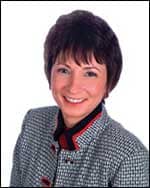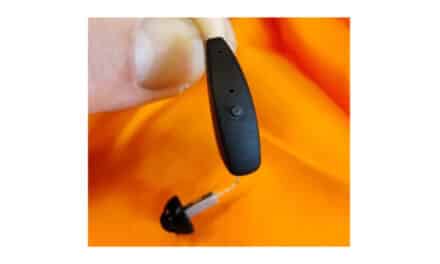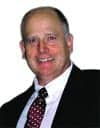Clinicians have always been interested in verifying their hearing instrument fittings, and most were trained in the use of Real-Ear Measurement (REM), soundfield assessment, electroacoustic analysis, various types of speech-based tests, and “diary-type” assessment tools.
All of these procedures were appropriate for use with traditional analog technology. While meaningful to the clinician, most of these tests ultimately had little impact on the patient’s acceptance or use of amplification, and the “targets” defined in REMs were often not acceptable to the patient. Additionally, these procedures were time consuming and, if one considers the real return-for-credit rate in the hearing industry, may have had limited impact on the quality of treatment.
Patient acceptance and understanding of amplification can be elusive; these remain among the biggest challenges that professionals face when recommending amplification. Clearly, one of the fundamental communication needs of the hearing-impaired individual is to hear and understand human speech. Recent innovations in technology now provide dispensing professionals with a patient-centric system that fully engages both the patient and third parties in the counseling and the fitting process.
Live Speech Mapping (LSM) is successfully being utilized by hearing care professionals to help patients fully understand and see what they can and cannot hear. LSM utilizes “live real-time speech”—that of a family member, friend, or familiar third party—for real-ear measurements.
Ironically, over recent years, instrumentation manufacturers have attempted to provide hearing care professionals with electronic “speech-like” signals designed to simulate actual speech, with all of its fluctuating amplitudes and changing spectral characteristics, as a target signal for real ear measurements. It seems apparent that utilizing a real speech signal, as it occurs in real life (ie, from the person with whom the patient normally converses), could add benefit when making program changes to improve hearing ability through amplification. Since speech is so dynamic, and a hearing-impaired individual’s residual hearing range so reduced, it is important that as many frequencies as possible in the appropriate range of human speech can reach audibility without “over-driving” the ear. Today’s advanced digital hearing instruments allow this kind of fine tuning.
A New Process for Verification and Fitting
The introduction and development of digital technology has created a demand for a newer type of verification process that is meaningful to both the clinician and the patient. LSM should be considered a fitting process, in our opinion, since it is much more than a simple test. The criteria upon which this technology is based is:
- The protocol is easy to use.
- It requires limited time to administer, interpret, and store into NOAH™.
- It is capable of measuring and displaying any type of auditory stimulus (ie, live speech, recorded sounds, music, etc) in real time.
- It is capable of measuring any type of hearing instrument without turning off any features.
- It is capable of fast, easy calibration.
- It is capable of providing interaction between the patient and the displayed results.
One key difference between this technology and other verification tools is that it allows the patient and family to clearly understand the results and realize an immediate and positive impact on their hearing as the programming of their hearing aid is changed. By displaying the results on a wall-mounted monitor, a “high-tech” image is presented to the patient and his/her family, and the patient can remain fully engaged in the assessment process.
This fitting and verification technique allows the clinician to “overlay” the LSM on any manufacturer’s fitting screen and make changes in programming that are experienced immediately by the patient.

System Set-Up
The LSM process is accomplished using a small flat processing unit, two speakers, and a probe microphone (Figure 1). In the stand-alone model, LSM is conducted on one ear at a time. With some equipment models, where the system is built into the audiometer, binaural speech mapping measurements are possible. Note that the system can be used with any type of speaker system, and the clinician can use a library of sounds and voices that are built into the equipment library or make a customized recording for clinical use.

Figure 2 shows the equipment in an actual clinical environment. The system is portable, allowing for off-site use of the process. This is an important issue, since once the clinician sees the value of this technique, it becomes an integral part of every fitting.
Results from the probe microphone are displayed on the computer screen in real time. The patient’s thresholds, uncomfortable loudness levels (UCL), and the sound pressure level (SPL) “Speech Banana” are displayed (Figure 3). Once the microphone is activated, the peak response can be “frozen” and stored or deleted. Multiple curves are shown in multiple colors, allowing visualization of different sounds or voices, as well as whether or not loud sounds exceed the patient’s UCL. Figure 4 shows aided responses for soft, comfortable, and loud sounds.

Figure 3. Results from the probe microphone are displayed on the computer screen in real time, and the patient’s thresholds, UCLs, and the SPL “Speech Banana” are displayed.
|

Figure 4. Aided responses for soft, conversational, and loud sounds are shown to the patient and companions. If vowels and consonants are not audible, or if loud speech exceeds the UCL, the screen can be “dragged and dropped” over the manufacturer’s program screen for further programming adjustments. |
How to Use the System as Part of a Clinical Protocol
With only a little practice, the use of LSM can become a standard part of your clinical protocol. The basic process is as follows:
- During the hearing exam, the clini-cian should record UCLs for tones, as well as thresholds for inter-stimulus intervals.
- Place the probe mic in the ear canal just past the second bend or slightly beyond the tip of the earmold. We always instruct patients to tell us if or when the probe “bumps,” although it is not necessary (or recommended) to touch the eardrum.
- With the probe tip securely in place, fit the patient’s hearing aid after connecting it to the fitting software.
- Again, make sure that the probe-tube insertion is comfortable for the patient.
- Enter the LSM software, and provide as good a view as possible on the computer screen so the patient and companions can observe it.
- Explain the patient’s thresholds, their UCLs, and the relevance of the speech banana.
- Turn on the microphone (use of the Rainbow Passage is recommended in the instructions, but we prefer to use the clinician’s live voice as a starting point) and present voice at 65 dB.
- Turn the probe-mic “off,” thus freezing the curve.
- Turn the probe mic back “on” (warning the patient first, of course) and present loud speech. Freeze the curve.
- If vowels and consonants are not audible, or if loud speech exceeds the patient’s UCLs, minimize the screen (this is accomplished via a function of the program) and drag and drop it over the manufacturer’s program screen.
- Turn the probe mic “on” and make programming adjustments to the aid until sounds are audible and not exceeding the UCLs, as displayed on the monitor. Most clinicians are surprised at what these programming adjustments do and don’t do in the real ear.
This basic procedure should take only 5-6 minutes of clinical time, and it should become a routine element of the clinical process.
A Clinically Revealing Process
Going beyond the basic process, LSM is an invaluable tool for fitting digital technology. When first using the equipment, we recommend performing the procedure on all new hearing aid fittings, regardless whether the patient is a new or experienced hearing aid wearer. Since the accuracy and utility of LSM is based on acoustic events which are recorded near the tympanic membrane, it is not necessary to “turn off” noise processors or other programmable features that are an integral part of digital hearing instrument technology.
Clinicians will soon begin to see a pattern of needed adjustments that tend to be very consistent with specific manufacturer’s product lines. Once this is observed, it is not uncommon when utilizing manufacturer’s “first fit” recommendations to routinely under-gain or over-gain the high frequencies (saving time); additionally, you will find that some use excessive compression for the mid and high frequencies, etc. Once these patterns are recognized, we make routine adjustments to the hearing aid prior to fitting, using speech mapping problem resolution or counseling.
Other tips for using LSM with digital hearing aids include:
- Using the probe mic in the “on” position, the clinician can observe the effects of different noise reduction strategies. Some are more effective than others (patients have been reporting this for years).
- Acoustic feedback can be observed, if it is not heard by the clinician.
- With a surround-sound system and a sound library, the clinician can observe and assess the effectiveness of directional programs, adaptive directionality, noise reduction, and other features of digital technology. Obviously, LSM will be appropriate for future applications as we expand our knowledge of the human ear and amplification strategies.
- We always perform a COSI (Client Oriented Scale of Improvement1 which is provided by NOAH, Oticon, and other manufacturers) as a part of our intake process. If any of the ranked items involve the voice of another individual (ie, spouse, parent, child, grandchild, etc), we make sure that we “map” that person’s voice. This process can often save a fitting when the clinician is overlooking what is really important to the patient.
LSM is designed to allow the clinician to achieve a good fit during the first session, reduce the development of a negative attitude toward the hearing aid, reduce time spent in problem solving, and decrease or eliminate returns for credit.
Patient Involvement: The Real Advantage
One of the primary advantages of using LSM as part of a clinical protocol is that it can be used to involve the patient directly in the fitting, adjustment, and purchase process.
New patients who already wear amplification can have an accurate look at what their hearing aid is or is not doing for them. The clinician can display graphics on the performance of the patient’s aid, presenting a professional image and reinforcing their recommendations for further or alternative treatment. Results of LSM can lead to adjustment of the patient’s current aid or the sale of a new hearing aid system.
LSM provides a powerful marketing tool when combined with open houses or other venues where groups of prospective patients can be provided with a pure-tone test. As a part of the process, the performance of the prospect’s own hearing aid can be defined, or new technology can be fit and measured using an ITC Digital capsule or stock aid with a Comply™ Snap Tip (both manufactured by Hearing Components). Not only is the accuracy of the fitting improved, but a high-tech image is created for your practice.
For patients buying new hearing instruments, LSM allows the patient and family to visualize the results of the hearing aid fitting. In short, LSM provides visible reinforcement of auditory results, yielding greater patient confidence in the clinician and their prescribed treatment.
We’ve found that the use of this process has resulted in an improvement in clinical efficiency: shorter, less frequent, more targeted sessions, and less stress on the clinician as we quantify complaints and adjustment needs based on data, rather than on the patient’s diary reports or memory.
The patient who walks in the door complaining that they “can’t hear anything” has become a thing of the past. LSM allows the partnership between the clinician and the patient to assume a new dimension and level of communication.
Outcomes to Expect When Using the System
Just as digital hearing instrument technology has affected the quality of patient care, LSM can be used to enhance the quality of the initial fit, evaluate existing technology, and assist in problem-solving as time passes or as the patient’s listening needs change. Specifically, the clinician can expect this system to assist in:
- “Doing it right the first time.” An accurate initial fitting goes a long way towards long-term patient satisfaction and acceptance of amplification.
- Increasing patient confidence. By making the patient a part of the verification process, the patient and family can “see” the effects of treatment and gain confidence in what the technology is actually accomplishing for them.
- Improving clinical efficiency. The system immediately shows you and the patient that vowels and consonants are audible and that special features of the technology (ie, telecoils, directional mics, etc) are, in fact, working as intended.
- Enhancing counseling. When specific voices or sounds are important to the patient, the system allows both the patient and family to “see” what is being heard relative to the patient’s hearing loss, and what sounds are being missed.
- Reducing (or eliminating) returns for credit. The process is not one test or technique, but a series of events that include accurate testing, pre-qualification of the patient, identification of the patient’s unique needs and desires, counseling, selection of technology that can meet the patient’s needs. Elimination of returns is a win-win for everybody.
Conclusion
Live Speech Mapping is a relatively new development in the process of verifying hearing aid fittings. Critical to the success of LSM is the involvement of the patient and family in the verification process. This involvement results in better fittings, increased patient confidence, and a reduction in the return for credit rate. Although the use of the system as a verification tool has been the focus of this article, the tool can be viewed as a fitting process which can be useful in the educational, counseling, treatment, and hearing aid selection process for the patient. More information on the equipment and clinical process is available at www.Medrx.com and www.hearingassociates.com.
| This article was submitted to HR by Terry Ross and Kenneth E. Smith, PhD. Ross is vice president of sales for MedRx, Inc, Largo, Fla, and Smith owns a private practice in Overland Park, Kan. Correspondence can be addressed to Terry Ross, MedRx Inc, 1200 Starkey Rd, Largo, FL 33771; email: [email protected]; phone: (888) 392-1234; Smith can be contacted via email at [email protected]. |
References
1. Dillon H, James A, Ginis J. Client Oriented Scale of Improvement (COSI) and its relationship to several other measures of benefit and satisfaction provided by hearing aids. J Amer Acad Audiol. 1997;8(1):27-43.





